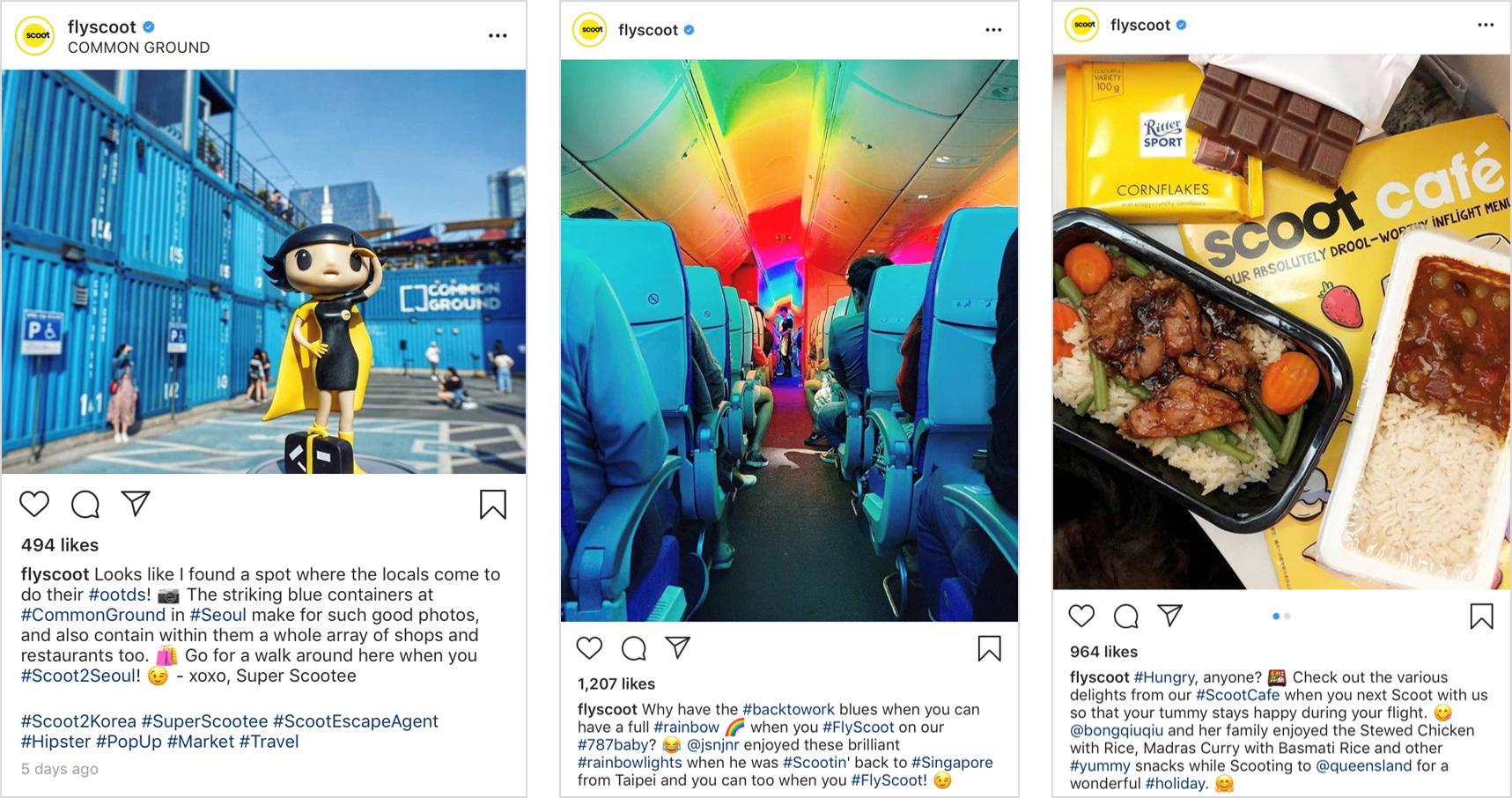

In today’s world, consumers actively seek authentic and meaningful brand experiences. To meet these expectations, brands are increasingly focusing on evaluating their overall brand presence and various touchpoints to enhance consumer engagement.
To create captivating stories about the brand, its brand elements need to be identified and named. With a distinct identity, the elements can thereby relate the audience to the brand, join the dots with other elements and navigate the audience within the brand’s world as the stories evolve. The terminologies used to name these elements should relate to the brand’s big idea or overall value proposition. For example, “magical experiences” for Disney. In this article, we will explore 3 approaches that you, the brand marketer, can consider when creating your brand language across your consumers’ brand experience journey.
In this article, we will delve into three approaches for brand marketers to consider when shaping their brand language throughout the consumer brand experience journey.
In cultivating a compelling Brand Experience, brand personalities serve as the cornerstone, breathing life into brands and fostering emotional connections with users. It can be brought forth in many ways: from a brand’s tone of voice, the imageries used and showcased across different touchpoints from product design, customer service experience, marketing campaigns, taglines to social media posts. With each brand element as an extension of the brand, it is, therefore, an opportunity for your brand language to take on the personality traits of the brand.
This approach is useful for brands with unique personalities, particularly for those along the “excitement” dimension. The higher perceived energy level from these brands make it easier to attract attention and thereby increase its overall appeal. For example, Happy Meal® from McDonald’s to reflect its cheerful and friendly personality or Nike Blazer / Air Max to illustrate Nike’s daring and spirited personality.
Another example is Scoot, a low-cost carrier brand of Singapore Airlines. Scoot’s bold, unconventional and quirky personality is a key anchor of its entire brand universe. From the brand name alone, which represents a swift movement, Scoot communicates its “quick and cheap getaway” value proposition in a fun and energetic manner. Represented in a bright yellow color, tongue-in-cheek tone of voice and comical illustrations, the brand is fuelled with Scootitude (spontaneity, open-minded attitude). This essence finds expression in creative marketing campaigns and the development of unique terminology to name diverse brand elements along the consumer’s brand journey, further enriching the Brand Experience.”

Compiled by Labbrand (Photos/Copy: Scoot’s website & social media)
Before travelling, consumers can choose to upgrade to the ScootinSilence zone or ScootBiz seats during or after their flight bookings. They are also encouraged to ScoottoGate when they depart from Singapore’s Changi Airport. Whilst onboard, travellers are welcomed by a rainbow array of lights and are greeted and served by Scootee. They can also choose to purchase meals via Scootcafe or shop in the air with Scootalogue. Recently, Scoot has also launched a new product, Escape Class, that allows travellers to book mystery destinations at low fares. In its marketing activities and communications, Scoot commonly uses terms such as flyscoot, scootin’, scoot2 (destination name), so-far-so-scoot etc to bridge relevance of travel with its brand name and promote call-to-action.

Examples of social media posts & unique hashtags created and used by Scoot
For consumers to navigate clearly and smoothly in their brand experience journey, brands need to identify a common thread across the different touchpoints to bind things together. By anchoring it around your ideal consumer experience, the theme creates a fictitious boundary for exploration and strengthened perceptions of the brand as every term created is closely associated with the brand’s ideal image. An example is Sephora, the beauty retailer with presence across the globe.
Sephora employs a ‘theatrical play’ theme that infuses its brand language and retail experience, fostering live performances and interactions among diverse stakeholders. Within the Sephora ecosystem, the sales floor transforms into a ‘stage,’ the store executives and beauty advisors are aptly referred to as the ‘cast members,’ and the store manager assumes the role of the ‘show director.’ This thematic consistency permeates the brand’s internal communication, addressing various brand touchpoints. The shared ‘lingo’ not only bolsters the collective identity of brand ambassadors but also contributes to the delivery of exceptional service experiences for consumers, affectionately known as ‘beauty lovers.’ This thematic thread enhances the overall Brand Experience.”

L-R: Sephora’s “cast members”, Sephora Studio, Sephora’s Beauty Insider program (Photos: Getty/Internet)
As the brand grew and with greater consumer traction, some of the terms are now made known to the public such as Sephora Studio (a new boutique retail concept) and its Beauty Insider loyalty program with tiering of VIB (Very Important Beauty Insider) and VIB Rouge for members with different spending history. The “theatrical play” theme presents Sephora as a “beauty stage”, where stakeholders interact, experiment and discover things about beauty in an intriguingly and engagingly way. Through its brand universe, Sephora creates an arena that allows multi-way conversations and content-creation around the topic of beauty between the brand and its stakeholders.
We are all attracted to novelty and surprises. An unexpected and new idea makes one stand out from the crowd and capture our attention. Within the consumers’ brand experience journey, giving commonly known brand touchpoint a different name brings a new perspective to the game. It enhances the level of uniqueness of the brand and makes it more memorable. This approach is most suitable for new brands seeking a breakthrough in an industry or category defiant, who choose to do things differently to stand out from the crowd. An example is FRANK by OCBC, an initiative to encourage financial literacy amongst youth as they enter adulthood.
Stemming from the phrase “frankly speaking”, FRANK By OCBC is direct, candid and welcoming. The brand differentiates itself from other conventional financial products by placing a strong focus on content-generation to address the issues faced by consumers in #adulting. Its FRANK Retail Store is designed with an open concept that allows consumers to browse, touch and have an open discussion with FRANK ambassadors on their banking needs. To further build relevance with the youth, the bank also launched a FRANKPRENEURSHIP, a summer internship program that kindles youths’ entrepreneurship spirit to be game-changers in the banking world.

L-R: FRANK Retail Store, Card design assortment, FRANKPRENEURSHIP project showcase (Photos: FRANK website)
Now that you have some idea on how to create the brand language for your brand’s elements, your next question may then be, “What can be named?”. Some of the most common aspects and brand elements that can be named include:

Examples of collaterals developed for the “The Palau Pledge” initiative
If your answer is “Yes” to most questions, Congratulations. You probably identified a suitable touchpoint that you should create a name for.
While it’s possible to label every aspect of the consumer’s journey through the brand experience, it’s not always advisable. The purpose of assigning names to elements within your brand is to enhance your brand’s ability to authentically, meaningfully, and distinctly engage with stakeholders. However, excessive labeling can be counterproductive, leading to stakeholder overwhelm and confusion. The key to deciding ‘what to name’ and ‘how to name’ lies in clearly identifying what truly suits your brand. Therefore, it’s important to be selective and strategic when crafting your brand’s language to maximize its impact.
A Labbrand Group Company © 2005-2024 Labbrand All rights reserved
沪ICP备17001253号-3To improve your experience, we use cookies to provide social media features, offer you content that targets your particular interests, and analyse the performance of our advertising campaigns. By clicking on “Accept” you consent to all cookies. You also have the option to click “Reject” to limit the use of certain types of cookies. Please be aware that rejecting cookies may affect your website browsing experience and limit the use of some personalised features.